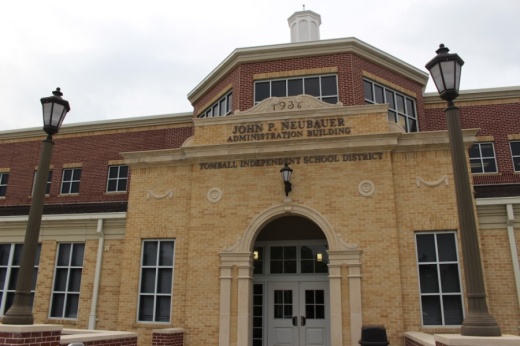Despite the deficit, Ross said during an April 12 board of trustees workshop the district has built up its reserves to prepare for new facilities opening.
“We have the funds in our fund balance to be able to fund this so it’s not surprising. We’ve set aside funds for years,” Ross said.
The district estimates $166.5 million in revenue for FY 2021-22 with budget expenses totaling $170.5 million, Ross said April 12.
A second budget workshop will be held May 10 to further pinpoint budget details, such as pay changes, before the board votes to adopt the budget June 15 and the fiscal year begins July 1, Ross said.
A closer look
Ross said the proposed FY 2021-22 budget is not comparable to the prior two budget years as the COVID-19 heavily influenced spending—or lack thereof—in 2020-21, and the district amended the start date of its fiscal year in 2019-20, resulting in a shorter fiscal year.
Yet, the budget shows a 5.58% increase in revenue over the previous year, he said.
Ross said the district has faced revenue shortfalls in the ongoing 2020-21 school year amid the COVID-19 pandemic because the district receives funding based on student attendance. He said the district has seen its enrollment growth cut in half—falling to about 3% growth—and a decrease in daily attendance; usually daily attendance hovers around 96% of students, whereas the district is currently seeing attendance fall to 92%-93%.
“We are paid based on average daily attendance, so if you have lower enrollment and decreasing attendance, it’s costing us money to deal with COVID-19,” Ross said. “We’re running a deficit budget this year, and it’s because of COVID.”
In addition to COVID-19 challenges, the district also sustained damages at its campuses from the winter storm that hit Texas in mid-February. Community Impact Newspaper previously reported the district estimated damages from the storm to total about $647,000.
As the pandemic and winter storm have affected state finances as well, Ross said there seems to be little relief in sight from the state.
However, he said changes to House Bill 3 mandates, funding allocations for fast-growth districts such as Tomball ISD and the state conveying federal relief dollars to school districts could bring more revenue to the district.
Despite the challenges brought by the winter storm and COVID-19, Ross said he does not anticipate a change in the tax rate from $1.29 per $100 valuation. This would be the third year the district has maintained its $1.29 per $100 valuation tax rate following a $0.05 state-mandated decrease from fiscal years 2018-19 to 2019-20.
“We’ve been steadily declining,” Ross said.
Staffing costs
The proposed FY 2021-22 budget allots funding for 96 new positions. This includes $4.67 million for 67 new teaching positions to accommodate growth in the district, including the opening of Grand Lakes Junior High School, as well as $714,386 reserved for 10 teaching positions as needed. Ross said the district sets aside funds for teaching positions that may need to be filled throughout the year, depending on enrollment growth. Additionally, 19 paraprofessional positions are included.
The budget also includes just over $2 million for 35 additional positions for the new facilities, such as professional support and ancillary staffing for the junior high and district stadium, Ross said.
Nine positions are also included for scoreboard and concessions operations at the new district stadium, which Ross said he anticipates should self-fund these nine positions from concession, scoreboard and community room receipts.
Ross said adequate information to determine the amount of a general pay increase for TISD employees is not yet available; however, based on consumer price index trends thus far, he said he anticipates at 1.5%-2.5% raise. The May 10 workshop is anticipated to include more details on a possible pay increase.





